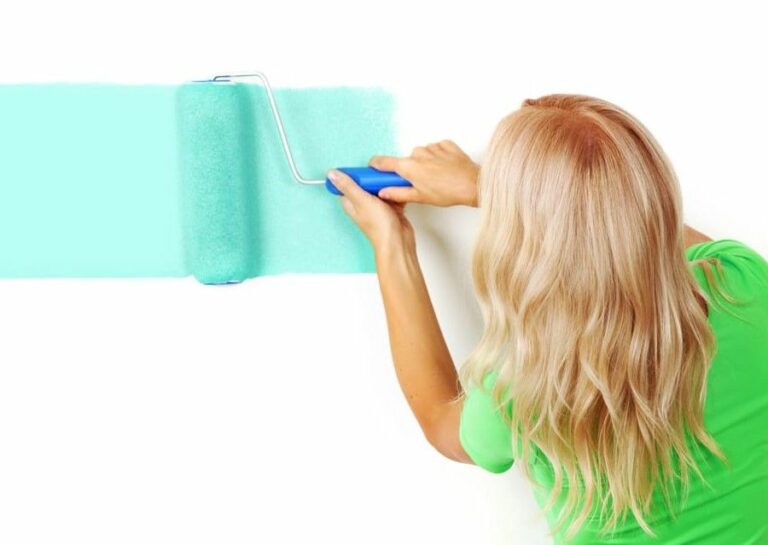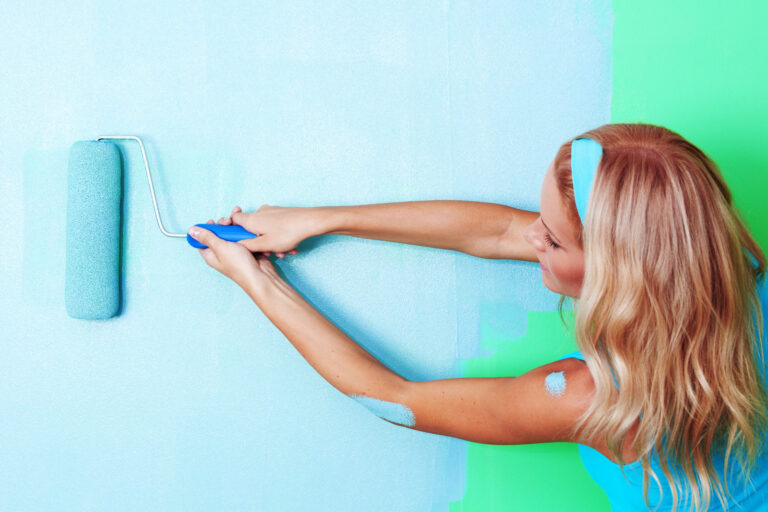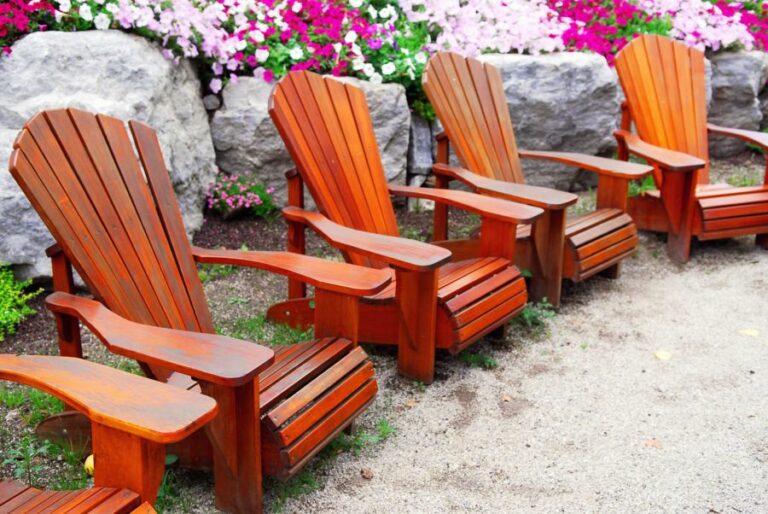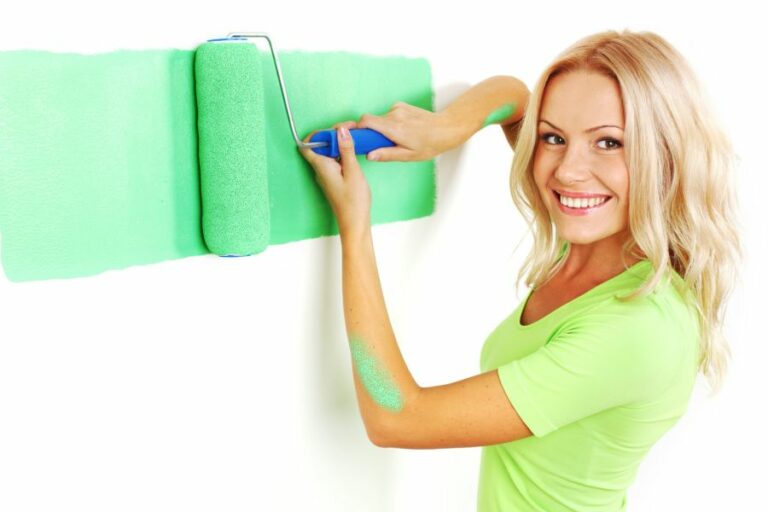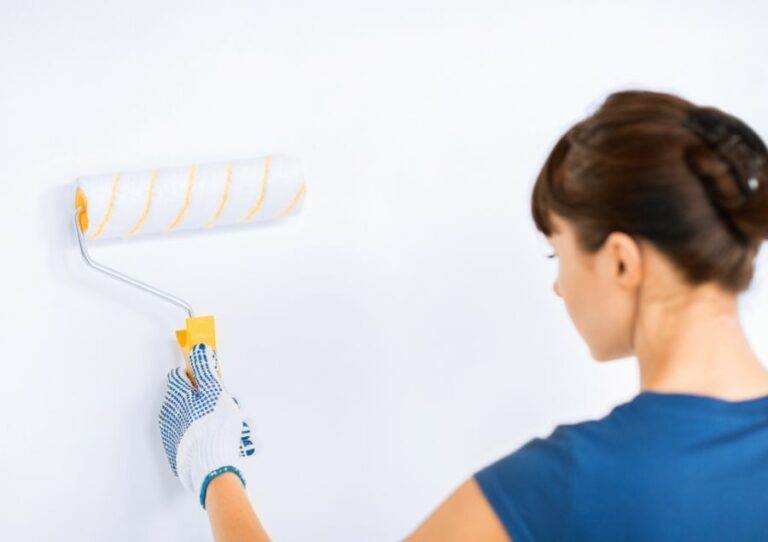What Paint To Use On Outdoor Wood, 25 Things You Should Know
Painting outdoor wood can be both rewarding and intimidating, but choosing the right paint is key to having a successful, long-lasting result. With numerous options available, it can be hard to know which paint is suitable for your specific needs. But fear not, for I have researched and honed in on the perfect paint selections for outdoor wood surfaces.
What paint to use on outdoor wood:>
For outdoor wood surfaces, water-based acrylic paint is often preferred due to its ease of use, durability, UV resistance, and environmental friendliness. However, in damp or humid environments or for specific wood types like dense hardwoods, oil-based alkyd paint may be more suitable. Consider factors such as weather conditions, wood type, maintenance commitment, and budget when selecting the right paint.

Not sure which paint to use on your outdoor wood surfaces? I’ve got you covered! Keep reading to learn about various paint options, including their respective benefits, application tips, and longevity-related information. Make that outdoor wood project last and look fantastic!
Contents
- 1 Selecting the Appropriate Paint for Outdoor Wood Surfaces
- 2 Determining the Best Type of Paint for Exterior Wood Surfaces
- 3 Is it Possible to Utilize Any Type of Paint on Exterior Wooden Surfaces?
- 4 What Type of Paint Should Be Utilized for Outdoor Wooden Signs?
- 5 What Type of Paint is Suitable for Outdoor Furniture?
Selecting the Appropriate Paint for Outdoor Wood Surfaces
Outdoor wood structures and furniture are a beautiful addition to any home, providing a natural and inviting atmosphere to your space. However, outdoor wood needs protection from the elements and requires proper maintenance to ensure its longevity.
One of the most effective ways to protect your outdoor wood is by applying paint. But with so many options, how do you choose the right paint for your specific needs?
• Understanding Paint Types
For outdoor wood projects, the two most common types of paint you will come across are water-based (acrylic) and oil-based (alkyd). Both come with their own set of advantages and disadvantages, so understanding each type is essential.
– Water-Based Acrylic Paint
Water-based acrylic paint has become increasingly popular for outdoor wood applications due to its ease of use and durability. Some advantages of acrylic paint include:
- Fast drying time, allowing for quicker project completion
- Lower risk of color fading from sun exposure
- Resistant to cracking and peeling
- Environmentally friendly with lower VOC (volatile organic compounds) emissions
- Easy clean-up with soap and water
However, there are some disadvantages to consider:
- May require more frequent maintenance compared to oil-based paints
- Can be less effective at preventing moisture penetration, leading to potential wood rot
– Oil-Based Alkyd Paint
Oil-based alkyd paint has traditionally been a popular choice for outdoor wood applications due to its long-lasting durability and excellent moisture resistance. Advantages of oil-based paint include:
- Excellent adhesion to the wood surface, creating a strong protective barrier
- Long-lasting protection against moisture and UV damage
- Less frequent maintenance needed compared to water-based paints
On the downside, oil-based paint comes with some drawbacks:
- Longer drying time, making the project completion slower
- Higher VOC emissions, which can be harmful to the environment and human health
- Difficult clean-up, requiring solvents such as mineral spirits or paint thinner
- Susceptibility to color fading from sun exposure
• Considerations for Choosing the Right Paint
When selecting the appropriate paint for your outdoor wood project, consider the following factors:
– Climate and Weather Conditions
Different paint types perform better under specific weather conditions. For instance, water-based acrylic paint is better suited for areas with high UV exposure, as it is more resistant to color fading.
On the other hand, oil-based paint is optimal for damp and humid environments due to its superior moisture resistance.
– Application Surface and Type of Wood
The type of wood and surface you are working on can also affect the paint choice. For instance, oil-based paint is known to work well on dense hardwoods like teak or mahogany, while water-based paint may be more suitable for softwoods like pine or cedar.
Additionally, consider the surface texture and condition of your wood. If your outdoor wood is rough, weathered, or prone to moisture issues (such as decks or fences), an oil-based paint may offer better adhesion and protection.
However, if you are working on smoother, well-preserved wood (like outdoor furniture), water-based acrylic may be the better option.
– Maintenance Commitment
Consider how much time and effort you are willing to invest in maintaining your outdoor wood.
While oil-based paint requires less frequent repainting, it may be more time-consuming and inconvenient, particularly considering its longer drying time and difficult clean-up. Water-based paint might require more frequent touch-ups but is generally easier to work with.
– Budget
Both water-based and oil-based paint can vary widely in price. Generally, you can expect higher quality, more durable paint to be more expensive. However, it is essential to weigh the overall value of a paint against its cost, given factors such as ease of application, durability, and environmental impact.
• Recommendations
Based on experience, water-based acrylic paint is an excellent option for most outdoor wood applications. Its ease of use and strong resistance to UV damage and cracking make it a favorite for many DIY enthusiasts and professionals alike.
Additionally, the lower environmental impact of water-based paint is a compelling factor for many users. That said, for specific wood types or issues with moisture, oil-based alkyd paint may be the most suitable choice.
Regardless of your choice, always remember to prepare your wood surface correctly by sanding, cleaning, and applying a quality primer before painting. For more information on paint selection and best practices, the U.S. Environmental Protection Agency offers valuable resources to help guide your decision.
Determining the Best Type of Paint for Exterior Wood Surfaces
Painting exterior wood can be a challenging yet rewarding task. Choosing the right paint for the job is crucial in order to achieve a long-lasting, protective finish.
• Acrylic Latex Paint
Acrylic latex paint is a versatile option for exterior wood surfaces. It is highly durable, offering excellent resistance to weather and UV exposure.
As a water-based paint, it poses minimal harm to the environment and is easy to clean up. Moreover, acrylic latex paint dries quickly, ensuring minimal downtime during your painting project.
I highly recommend using high-quality acrylic latex paint for your exterior wood surfaces as it provides excellent adhesion and coverage, resulting in a smooth, even finish that lasts for years.
– Pros
- Durable and long-lasting
- Easy to clean and maintain
- Resistant to weather and UV exposure
- Quick drying time
- Low VOC (Volatile Organic Compounds) content
– Cons
- May not adhere well to previously painted surfaces
- Can be less flexible than other types of paint, leading to flaking or cracking
• Oil-Based Paint (Alkyd Paint)
Oil-based paints are another popular option when it comes to exterior wood. They are known for their durability and ability to withstand harsh weather conditions. Oil-based paints also provide high-quality protection for the wood surface and are less prone to peeling, chipping, or flaking.
When using oil-based paints, keep in mind that they take longer to dry compared to water-based paints and require the use of mineral spirits or paint thinner for cleanup. Additionally, oil-based paints contain higher VOC levels, making them less environmentally friendly.
– Pros
- Durable and long-lasting
- Provides strong protection for the wood surface
- Less prone to peeling, chipping, or flaking
- Excellent leveling and adhesion properties
– Cons
- Longer drying time
- High VOC content
- Clean-up requires solvents such as mineral spirits or paint thinner
• 100% Acrylic Paint
100% acrylic paint is a high-quality paint option for exterior wood. It is highly resistant to wear, tear, and weather, offering an excellent level of durability. This type of paint provides superior adhesion and coverage, resulting in a smooth, even finish.
However, 100% acrylic paint can be more expensive compared to acrylic latex or oil-based paints, so it may not be the best option if you are working with a limited budget. Nonetheless, its performance and durability make it an excellent investment for your exterior wood surfaces.
– Pros
- High level of durability and weather resistance
- Superior adhesion and coverage
- Less prone to cracking or peeling
- Retains color and gloss well
– Cons
- Higher cost compared to other types of paint
• Exterior Stains and Sealers
In addition to traditional paints, exterior wood stains, and sealers can provide a viable alternative for protecting and enhancing the natural beauty of your wood surfaces. Stains come in varying degrees of opacity, from transparent to solid, allowing you to choose the level of color and protection you desire.
While stains provide color, sealers create a clear protective layer that helps protect the wood from moisture, UV exposure, and other environmental factors. Choose a stain or sealer with UV protection to prevent fading and ensure long-lasting color on your wood surfaces.
– Pros
- Protects and enhances the natural beauty of the wood
- Offers different levels of color and protection
- UV resistant when specifically formulated for it
- Can last longer than traditional paint
– Cons
- May require more frequent application compared to paint
- Doesn’t provide a smooth finish like traditional paint
• Final Thoughts
Choosing the best paint for exterior wood surfaces depends on your unique needs and preferences. Consider factors such as durability, weather resistance, adhesion, and cost when making your decision.
Acrylic latex paint and 100% acrylic paint are ideal options for their superior performance and low environmental impact, whereas oil-based paint provides strong protection and adhesion but is less environmentally friendly.
Lastly, stains and sealers offer an alternative solution for those looking to enhance the natural beauty of their wood surfaces while providing protection from environmental factors.
Paint Type | Advantages | Disadvantages |
|---|---|---|
Acrylic Latex | Durable, water resistant, easy to clean, flexible, resistant to peeling and fading | Not as smooth as oil-based paints, may require multiple coats |
Oil-Based | Highly durable, smooth finish, good adhesion, long-lasting | Higher VOC levels, longer drying time, harder to clean |
Enamel | Extremely durable, resistant to wear and tear, retains glossy finish, washable | Can be less flexible, may crack over time, may require a primer |
Water-Based Stains | Low VOC levels, easy to clean, quick drying, breathable | May not provide as much protection, may require frequent re-coating |
Oil-Based Stains | Highly durable, provides deep penetration for protection, rich color finish | Longer drying time, higher VOC levels, may require re-coating less frequently than water-based |
Is it Possible to Utilize Any Type of Paint on Exterior Wooden Surfaces?
• Choosing the Right Paint for Outdoor Wood
When it comes to painting outdoor wood, it is essential to select the right type of paint. Not all paints are suitable for outdoor use, as they may not withstand harsh weather conditions or provide adequate protection against moisture, pests, and UV damage.
There are two primary types of paint recommended for outdoor wood – latex-based paints and oil-based paints. Both options have their advantages and disadvantages, so it is crucial to consider your specific needs when choosing the best paint for your project.
– Latex-Based Paint
Latex-based paints are water-based and more eco-friendly than their oil-based counterparts. They are quick-drying, easy to clean up, and have low levels of toxic emissions.
Benefits of latex-based paint for outdoor wood:
- Easier application and faster drying time
- Less prone to cracking and peeling
- Resistance to mildew and mold growth
- Minimal odor during application and curing
– Oil-Based Paint
Oil-based paints, also known as alkyd paints, use a natural or synthetic oil as their primary component. While they take longer to dry and clean up, they provide excellent durability and resistance to wear and tear.
Benefits of oil-based paint for outdoor wood:
- Superior adhesion and ability to penetrate the wood surface
- Enhanced resistance to water and abrasion
- Less likely to fade or yellow over time
- Increased durability, resulting in less frequent repainting
• Preparing and Priming the Wood Surface
To ensure a successful paint job, it is necessary to prepare the wood surface correctly before applying the paint. This includes cleaning, sanding, and priming the surface to ensure proper adhesion and protection.
– Cleaning the Wood
First, clean the wood surface to remove any dirt, debris, or loose paint. This can be done using a stiff brush or a pressure washer, depending on the condition of the wood.
– Sanding the Wood
Next, sand the wood to create a smooth and even surface for the paint to adhere to. Start with a coarse-grit sandpaper (e.g., 80-grit) and work your way up to a finer grit (e.g., 180-grit). Be sure to sand in the direction of the wood grain to prevent scratches and gouges.
– Priming the Wood
Once the wood is clean and smooth, apply a high-quality primer designed for outdoor use. This step is important if you have new or untreated wood, as the primer will help seal the surface, prevent moisture from penetrating, and improve paint adhesion.
If the wood has been previously painted or stained, you may need to use a stain-blocking primer to prevent any discoloration from bleeding through the new paint.
• Tips for Applying Paint on Outdoor Wood
To achieve a successful paint job, follow these tips to ensure proper application and long-lasting results.
- Choose the right paintbrush: Use a high-quality paintbrush with natural or synthetic bristles, depending on the type of paint you’re using. Synthetic bristles are best for latex-based paints, while natural bristles work well with oil-based paints.
- Apply multiple coats: For optimal coverage and protection, apply at least two coats of paint to the wood surface. Allow each coat to dry thoroughly before applying the next one.
- Paint in the right weather conditions: The ideal temperature for painting outdoor wood is between 50-85F, with a relative humidity of 40-70%. Avoid painting in direct sunlight or during times of high humidity or precipitation.
- Maintain your paint job: To extend the life of your paint job, clean the wood surfaces periodically, and touch up any areas where the paint has chipped or worn away.
- Follow the manufacturer’s instructions: Always read and follow the manufacturer’s instructions on the paint can for proper application, drying times, and other essential information.
• In Conclusion
While not all paints are suitable for outdoor wood, both latex-based and oil-based paints offer excellent options for your project.
By properly preparing the wood surface, selecting the right paint, and following best practices for application, you can achieve a beautiful, long-lasting finish that will protect your outdoor wood for years to come.
For additional information on caring for outdoor wood, consult resources such as USDA Forest Service or your local extension office.
Type of Paint | Can It Be Used on Outdoor Wood? |
|---|---|
Exterior Latex Paint | Yes |
Oil-based Paint | Yes |
Acrylic Paint | No (unless specifically labeled for outdoor use) |
Interior Latex Paint | No |
What Type of Paint Should Be Utilized for Outdoor Wooden Signs?
Creating an eye-catching and durable outdoor wood sign can be an essential aspect of your branding strategy, providing a visual representation of your business and conveying a key bit of information about your services.
When selecting the right type of paint to use on outdoor wood signs, several primary factors to consider are durability, color vibrancy, ease of application, and maintenance.
• The Importance of Weather-Resistant Paint
One significant consideration when selecting paint for an outdoor wood sign is its ability to withstand harsh weather conditions. Exposure to rain, snow, extreme temperatures, and UV rays can make the paint fade, peel, or crack. In general, outdoor paint should be able to:
- Protect the wood from rot and decay.
- Preserve the original color, even when exposed to sunlight.
- Not require constant touch-ups or maintenance.
• Top Paint Choices for Outdoor Wood Signs
– Acrylic Latex Paint
Acrylic latex paint is a popular choice for painting outdoor wood signs, primarily due to its versatility, durability, and easy maintenance. It is water-based, dries quickly, and is resistant to cracking, peeling, and fading.
Additionally, acrylic latex paint is available in many vibrant colors, allowing you to customize your sign to your desired hue.
Pros:
- Water-resistant and UV-resistant.
- Quick-drying and easy to clean.
- Available in various colors.
- No need for a primer in most cases.
Cons:
- Can be less eco-friendly, as some brands emit volatile organic compounds (VOCs)
- Costlier than other paint options.
Based on these factors, I highly recommend acrylic latex paint for outdoor signs considering its overall durability, ease of application, and color availability.
– Enamel Paint
Enamel paint is another excellent choice for outdoor wood signs. It’s an oil-based paint that dries to a very durable and glossy finish. As enamel paint provides a rigid surface, it has excellent resistance to weathering and its glass-like protection makes it water-resistant.
Pros:
- Extremely durable and weather-resistant.
- Available in a broad range of colors.
- The high-gloss finish adds a professional touch to signs.
Cons:
- Requires the use of a paint thinner for cleanup.
- Dries slower than acrylic latex paint.
- The oil base can emit VOCs.
– Exterior Water-Based Alkyd Paint
Exterior water-based alkyd paint is a newer type of paint on the market, using a synthetic oil base and a water carrier. It dries hard like enamel paint but has the added benefit of lower VOC emission, which is beneficial for the environment and personal health.
Pros:
- Hard, durable finish, suitable for outdoor use.
- Fast drying time.
- Lower VOC emission compared to enamel paint.
Cons:
- Can be challenging to find in stores.
- Limited color selection.
• Extra Tips for a Long-lasting Outdoor Wood Sign
– Prepping the Wood Surface
For any paint job to turn out its best, proper preparation of the wood’s surface is essential. Prep work involves sanding the surface smooth, removing any dust or debris, and applying a quality primer to create a proper bond between the paint and the wood.
– Adding a Protective Topcoat
To prolong the life and sheen of your outdoor wood sign, consider applying a clear protective topcoat (like a polyurethane sealer) over the paint. This extra layer of protection can help guard against moisture, UV rays, and scratches.
– Regular Maintenance
Maintaining your outdoor wood sign can be as easy as occasionally wiping down the surface with a damp cloth to remove any dust, dirt, or debris. If you spot any small scrapes, consider a quick touch-up with the appropriate paint to keep your sign pristine.
• Conclusion
Based on durability, color vibrancy, and ease of application, I recommend using acrylic latex paint for outdoor wood signs. However, enamel paint and exterior water-based alkyd paint are also suitable alternatives.
Remember to prep the wood surface, apply a primer, and consider adding a protective topcoat to maximize the longevity of your sign. Regular maintenance will also help keep your outdoor wood sign in top condition, ensuring a professional and eye-catching presence for your business or organization.
Paint Type | Description | Pros | Cons |
|---|---|---|---|
Exterior Acrylic Latex Paint | Water-based paint that provides a durable, weather-resistant finish. | Easy to clean, low odor, dries quickly, resists fading and chipping | May not adhere well to certain surfaces without proper priming, may show brush strokes if not applied properly |
Oil-Based Enamel Paint | Provides a hard, glossy finish that is resistant to wear and tear. | Long-lasting, durable, adheres well to most surfaces, resistant to weather and water | Requires longer drying time, may be difficult to clean up, strong odor |
Exterior Latex House Paint | Formulated for outdoor use on various surfaces, such as wood, brick, and stucco. | Durable, easy to clean, good coverage, adheres well to surfaces | May not provide a high-gloss finish, may require multiple coats for desired appearance |
What Type of Paint is Suitable for Outdoor Furniture?
Painting outdoor furniture can be a great way to spruce up your outdoor space and give it a fresh, new look. There are several different types of paint that are suitable for outdoor furniture, and the best type for your project will depend on the material of the furniture and the desired finish.
• Factors to Consider When Selecting Outdoor Furniture Paint
Before we dive into the different paint options available for outdoor furniture, it’s important to consider a few crucial factors that will affect the performance and longevity of your paint job.
- Weather resistance: Outdoor furniture is exposed to harsh weather conditions, including sunlight, rain, and temperature fluctuations. It’s essential to choose a paint that is specifically formulated for outdoor use and offers excellent resistance to these elements.
- Durability: You’ll want a paint that can withstand the wear and tear of daily use, as well as regular cleaning and maintenance.
- Adhesion: Your chosen paint should adhere well to the surface of the furniture, ensuring a smooth and even finish.
- Ease of application: Consider the ease of application, as some paints may require additional tools or multiple coats for a professional-looking result.
- Finish: Depending on your personal preferences and the aesthetic you want to achieve, you may opt for a matte, satin, or glossy finish.
Now that we’ve covered the essential factors to consider, let’s explore the different types of paint suitable for outdoor furniture.
• Latex Paint
Latex paint, also known as water-based or acrylic paint, is an excellent choice for outdoor furniture made from wood, metal, or plastic.
It provides a durable and flexible finish that is resistant to cracking and peeling. Latex paint is also water-resistant, making it suitable for furniture exposed to rain or high humidity.
To achieve excellent adhesion and a smooth finish with latex paint, it’s crucial to adequately prepare the surface of the furniture. Sanding the surface to remove any old paint or rough areas and then cleaning the furniture thoroughly will help to ensure that the paint bonds well to the material.
You can find detailed guidelines on surface preparation and application from the Federal Preservation Institute.
Latex paint usually requires two to three coats for full coverage and a uniform finish. It dries relatively quickly, allowing you to apply multiple coats in a single day. Most latex paints for outdoor use have a semi-gloss or satin finish, but you can also find matte options if desired.
I recommend choosing a high-quality latex paint specifically designed for outdoor use, as this will ensure optimal weather resistance and longevity.
• Enamel Paint
Enamel paint is another popular choice for outdoor furniture, particularly for metal surfaces. It provides a durable and smooth finish that is resistant to rusting and chipping.
Enamel paint is available in both oil-based and water-based formulas, although oil-based products typically offer superior durability and weather resistance.
To achieve the best results with enamel paint, the surface must be prepared correctly. Metal furniture should be sanded to remove any rust or flaking paint and then wiped down with mineral spirits to remove any dust or residue.
For wooden or plastic furniture, the surface should be sanded to create a smooth finish and then cleaned thoroughly.
Enamel paint can be applied with a brush or a paint sprayer, depending on your preference and the size of the furniture. The paint usually takes longer to dry than latex paint, so it’s essential to allow adequate drying time between coats.
Once dry, enamel paint provides a highly durable and easy-to-clean finish, making it an excellent option for outdoor furniture.
I recommend choosing high-quality enamel paint from a reputable brand to ensure the best possible results.
• Spray Paint
Spray paint is a convenient and effective option for painting outdoor furniture, especially for smaller projects or pieces with intricate designs or detailing. It’s available in a wide range of formulations suitable for various materials, including metal, wood, and plastic.
The advantages of using spray paint include the ease of application and the ability to achieve a smooth and even finish, even on awkward or hard-to-reach areas. However, it’s crucial to use the correct technique when applying spray paint to avoid drips or an uneven finish.
When selecting spray paint for outdoor furniture, look for a product specifically designed for exterior use, as this will offer better durability and weather resistance.
It’s also essential to choose a paint suitable for the material of the furniture. For example, a paint formulated for metal surfaces may not adhere correctly to plastic or wood.
In my experience, using a suitable primer and applying multiple light coats of spray paint will give you the best results and a long-lasting finish.
• Conclusion
With numerous paint options available for outdoor furniture, it’s crucial to choose the right type based on the material your furniture is made of and the desired finish.
Latex paint is an excellent choice for wood, metal, and plastic furniture, while enamel paint provides exceptional durability for metal surfaces. Spray paint is a convenient option for smaller projects or intricate pieces.
Always ensure you adequately prepare the surface before applying paint and follow the manufacturer’s recommendations for application and drying time. Choosing high-quality paint specifically designed for outdoor use will help to ensure a long-lasting and attractive finish for your outdoor furniture.

